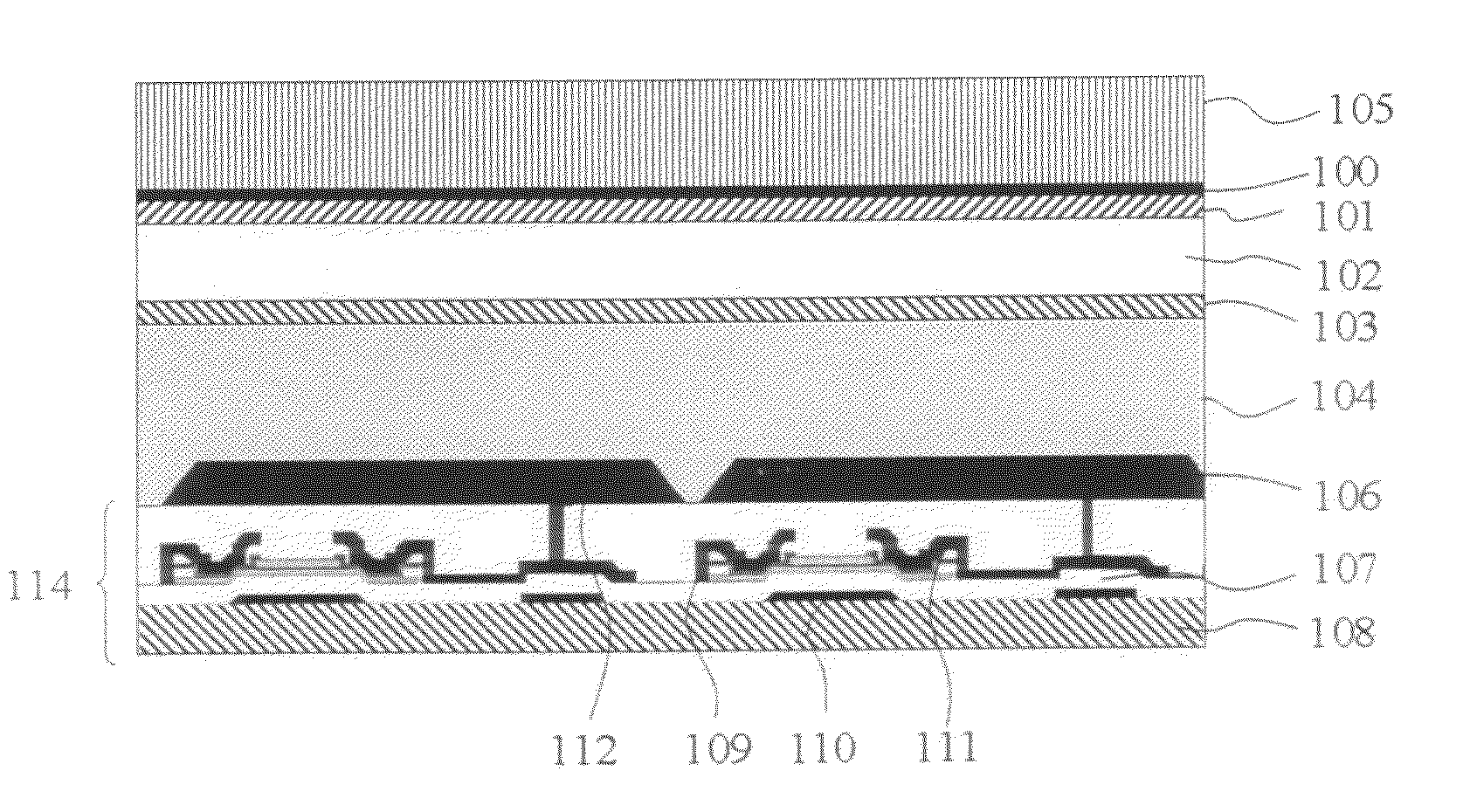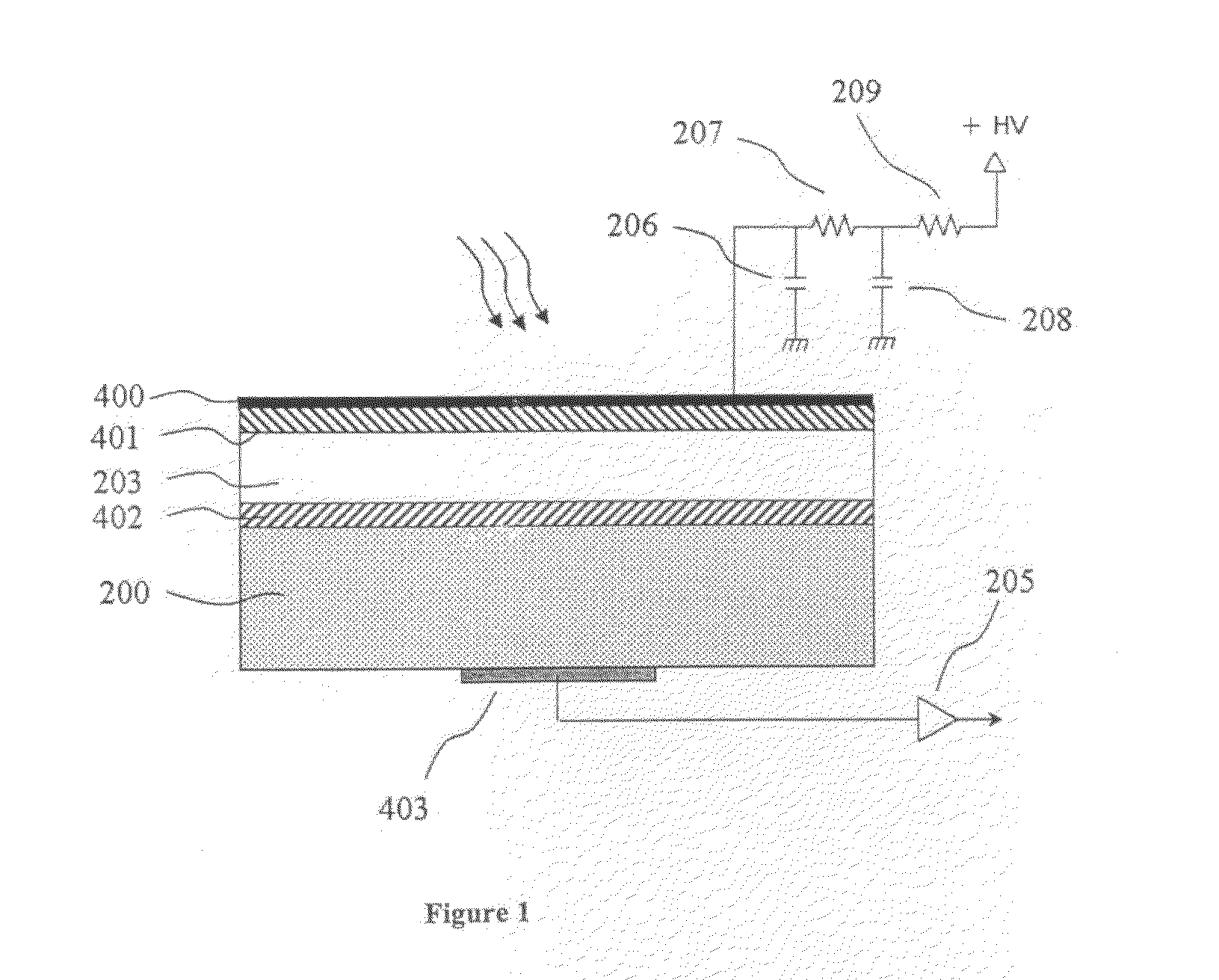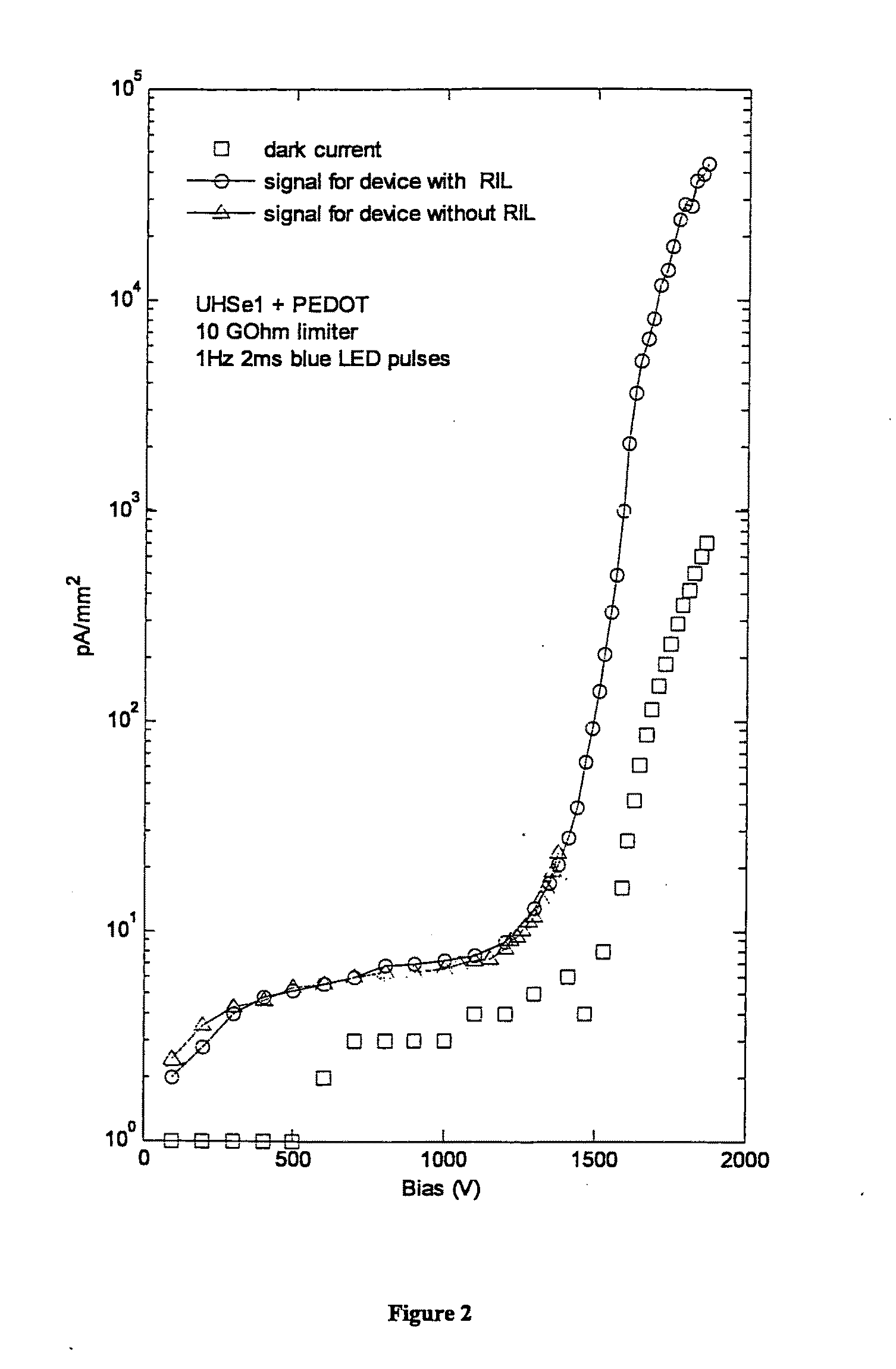Photodetector/imaging device with avalanche gain
a photodetector and imaging device technology, applied in the direction of x/gamma/cosmic radiation measurement, radioation controlled devices, instruments, etc., can solve the problems of discharge generating an electric current that rises uncontrollably, without bounds, and using the avalanche properties of acps in solid-state devices for very high sensitivity
- Summary
- Abstract
- Description
- Claims
- Application Information
AI Technical Summary
Benefits of technology
Problems solved by technology
Method used
Image
Examples
Embodiment Construction
[0031]In the following, a photodetector / imaging device with avalanche gain is disclosed that avoids the undesirable effects associated with incipient breakdown allowing the photodetector / imaging device to be subjected to high electric fields sufficient to take advantage of avalanche multiplication of both types of charge carriers (holes and electrons). In one form, the photodetector / imaging device comprises a layer of photoconductive material for receiving incident electromagnetic radiation and for converting the electromagnetic radiation into electrical charges. The layer of photoconductive material is capable of avalanche multiplication when an electric field of sufficient magnitude is applied thereacross. At least one interface layer is provided for coupling electric charge to or from the layer of photoconductive material. A readout layer detects the electrical charge.
[0032]For proof of concept, an experimental photodetector device with avalanche gain was developed as shown in FI...
PUM
 Login to View More
Login to View More Abstract
Description
Claims
Application Information
 Login to View More
Login to View More - R&D
- Intellectual Property
- Life Sciences
- Materials
- Tech Scout
- Unparalleled Data Quality
- Higher Quality Content
- 60% Fewer Hallucinations
Browse by: Latest US Patents, China's latest patents, Technical Efficacy Thesaurus, Application Domain, Technology Topic, Popular Technical Reports.
© 2025 PatSnap. All rights reserved.Legal|Privacy policy|Modern Slavery Act Transparency Statement|Sitemap|About US| Contact US: help@patsnap.com



